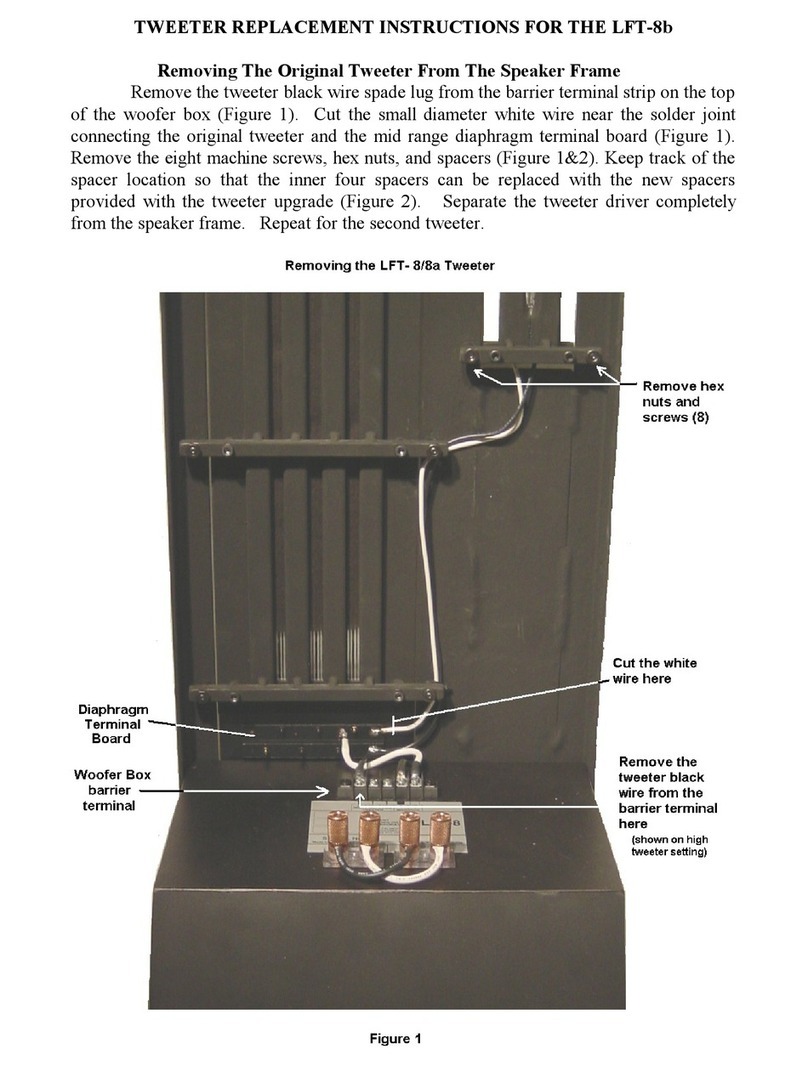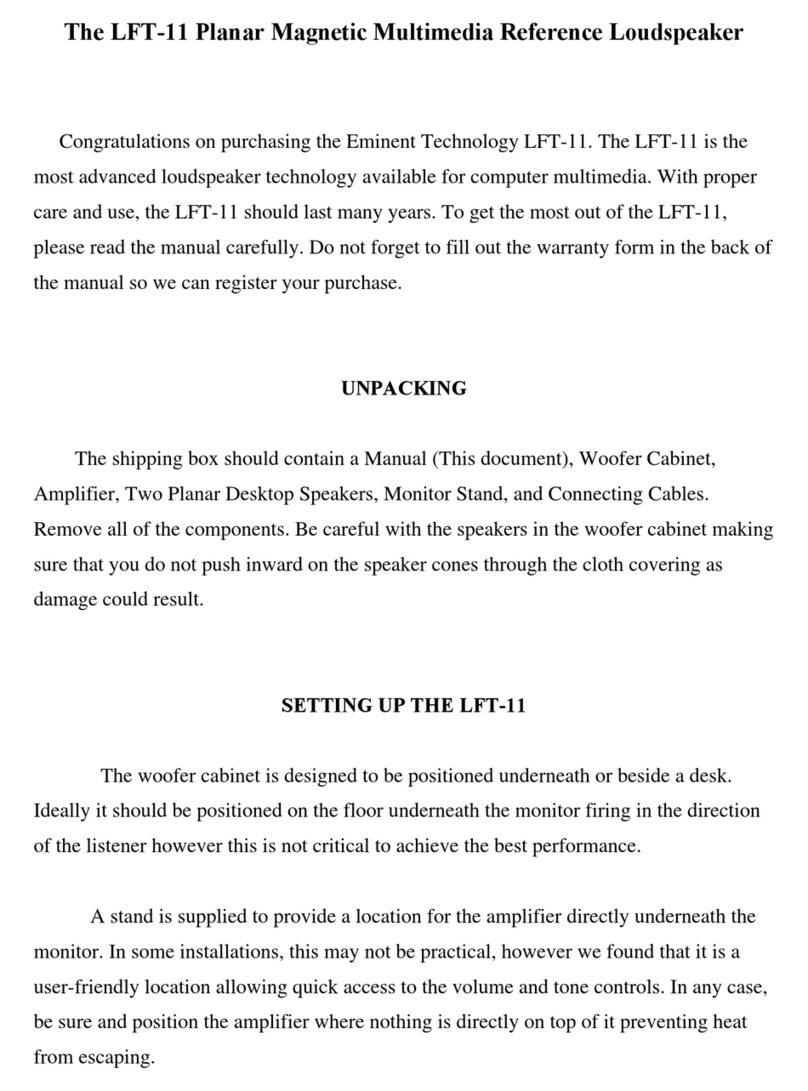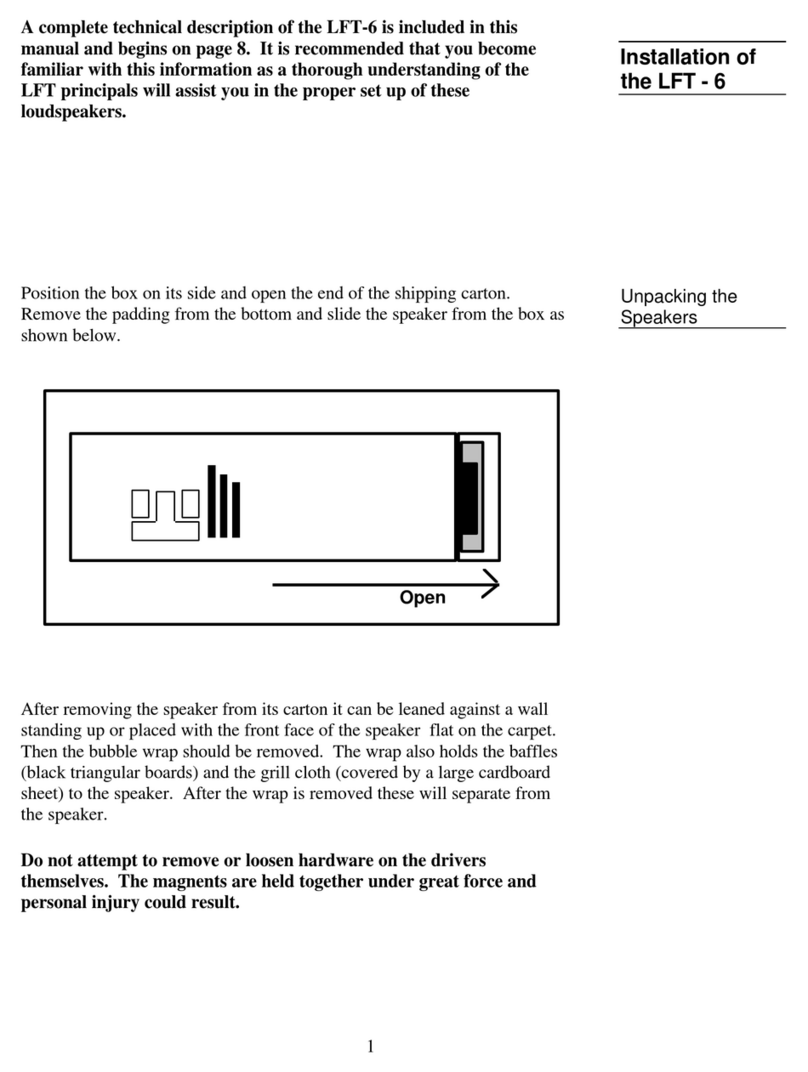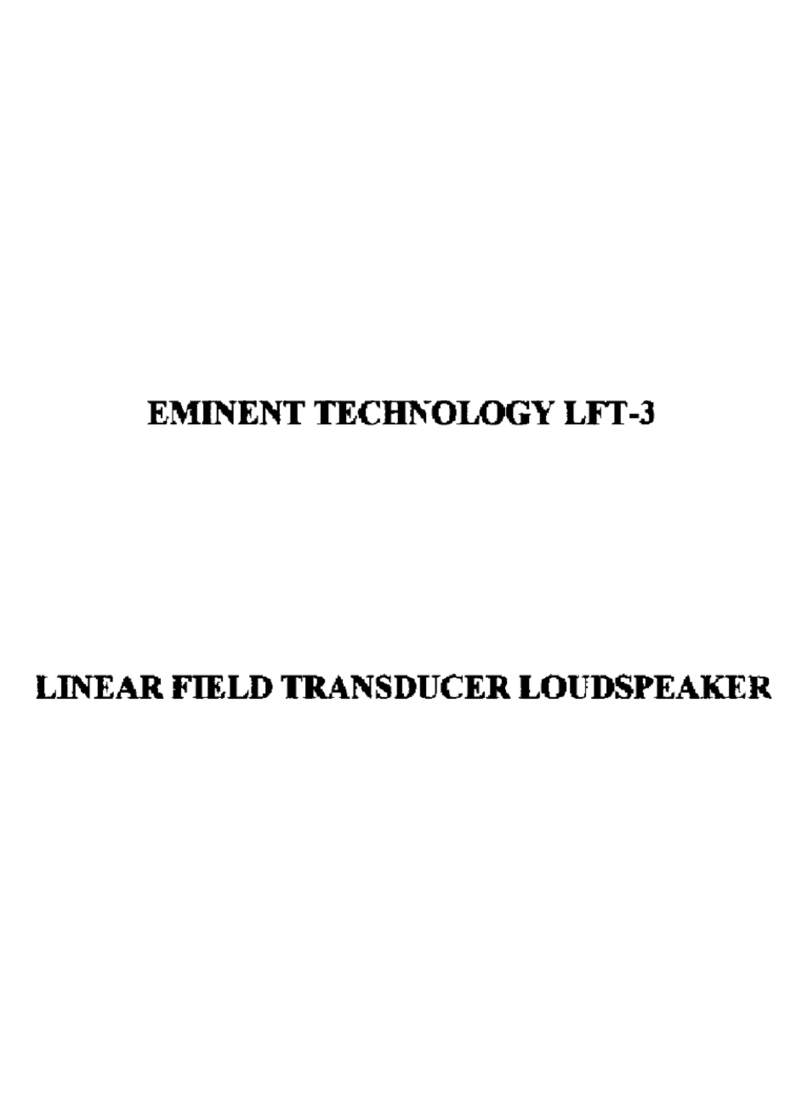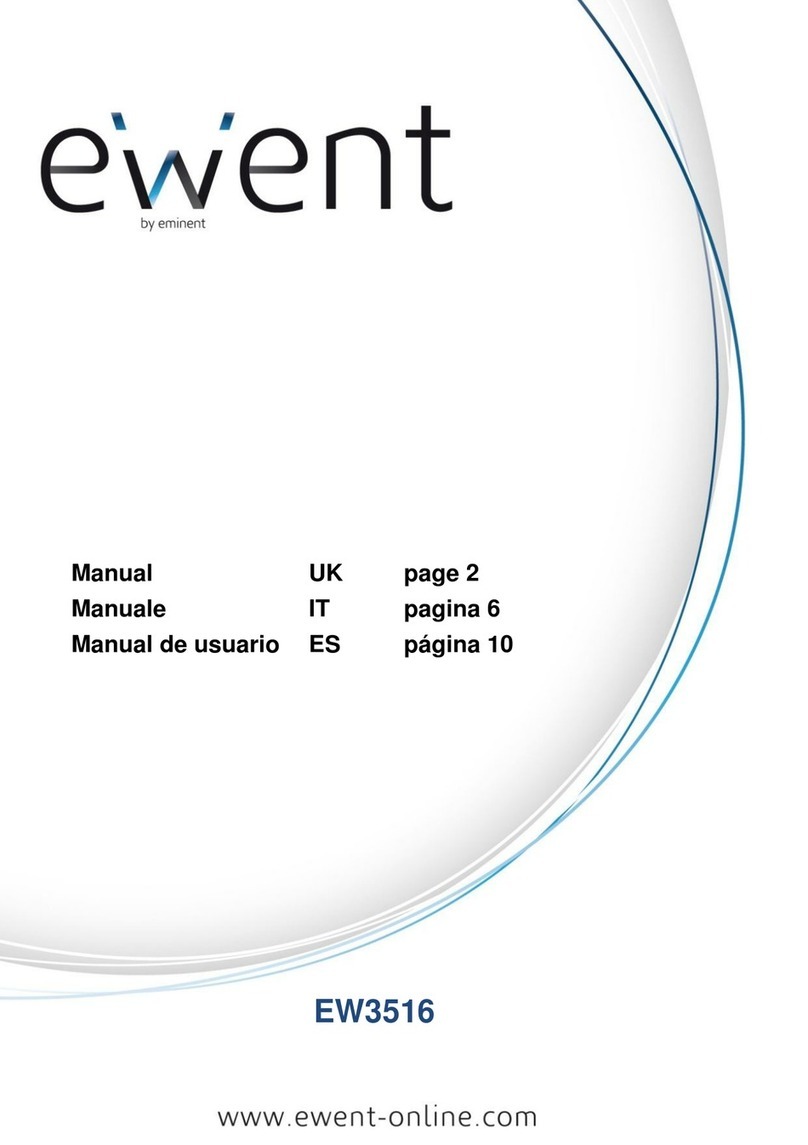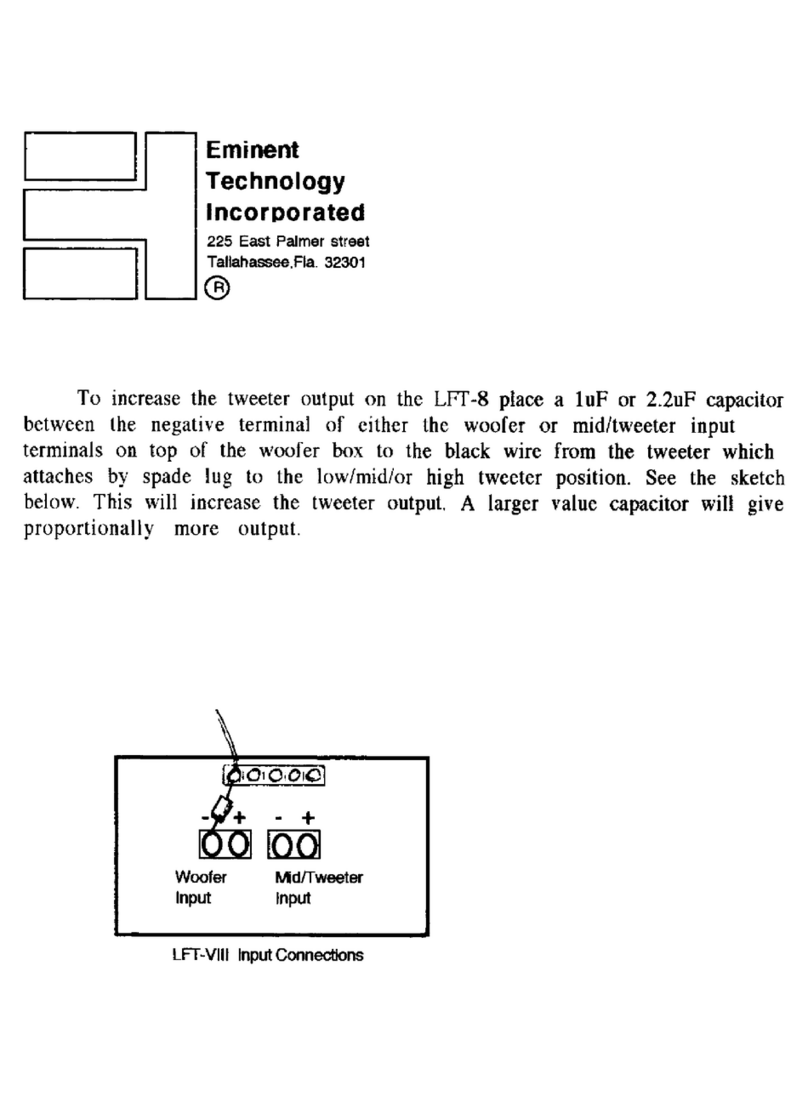
position the speakers so that the main listening position is about
on axis with each speaker. Slight mid-range frequency balance
changes can be obtained by pointing the speakers slightly away
from the listening position. Adjusting the speakers’ degree of
vertical tilt with the pointed feet can also alter this balance.
Overall imaging depends primarily on the distance separating the
two speakers relative to their distance from the preferred listening
position; it is also affected by the degree of toe-in. We cannot
accurately predict what will work best in your listening room, and
can suggest only that you begin with the drawing on the previous
page as a starting point or general guideline. Keep in mind that
the parameters that affect frequency balance also tend to affect
imaging properties, and vice versa, so it is best to adjust speaker
placement in small increments and to note carefully all of the
changes effected by each shift in position before proceeding
further.
The high frequency performance of the LFT-16 is adjusted with
the tweeter level control. There are three tweeter level positions:
High, Mid and Low. These levels adjust the tweeter output in
approximately 3 dB increments. It is best to start with the tweeter
level setting in the middle position. Adjust the speakers for the
best overall frequency balance and then decide if more or less
high frequency energy is needed.
The LFT-16 is wired for 8-ohm operation and is appropriate for
use with most moderately powered tube and solid-state amplifiers.
The efficiency is 85dB with a 2.83-volt drive (1 “8” ohm watt).
The efficiency rating is lower than average. However, the LFT-
16 radiates a planar wave front, and as such, on axis its apparent
efficiency at the listening position is higher than the numerical
rating implies. The LFT-16 has a minimum rating of 25 watts per
side, tube or solid state. It can handle “music power” levels (short
term burst) of 200 watts or more with out difficulty. The largest
recommended amplifier size for the LFT-16 is 200 watts.
The LFT-16 does not require a high current amplifier. A receiver
may be used if it has sufficient power. Tube amplifiers should be
used with the 8-ohm tap.
Imaging
The Tweeter
Level Control
Amplifier
Requirements
6



